Polyester: characteristics and varieties

The man made friends with polyester for a long time, back in the early 40s of the last century, and this friendship continues to this day. Polyester is present everywhere in our life, but primarily in clothes and household items.

What it is?
Polyester is a type of fabric. The raw materials for its manufacture are polyester fibers, which are obtained in the process of refining petroleum products. Polyester production began in the 1930s – 1940s. In our country, it appeared back in 1949 and entered production in the 60s. In the 70s in the USA, everyone was already talking about magic fabric, which can not be washed for several months, but it will still be like new. True, in the USA and in other countries it was called quite differently - dacron, melinex, terylene, and in the USSR - lavsan.
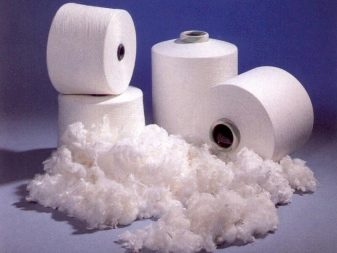

Natural fabric or synthetics?
Polyester, of course, is a synthetic type of fabric, but it rightfully ranks first among all the variety of synthetic materials.
The fibers of the polyester fabric contain pure processed polystyrene, which is released from refined petroleum. In production, polystyrene is melted to obtain liquid polyester and the product is chemically purified. It is then passed through narrow holes in order to obtain fine polyester fibers. Further, the fibers, after processing, go to the manufacture of fabrics.
This brief description of the production of fabric gives the concept that polyester is a pure synthetic made from synthetic materials. Of course, various natural fibers can be added to it in order to improve the quality of the resulting material. Thus, the manufacturing process itself depends entirely on what kind of fabric and with what properties you need to get the output.


Advantages and disadvantages
Polyester certainly has more advantages than disadvantages. Polyester fabric is widely used not only in everyday life, but also in production. The pluses include:
- good wear resistance;
- ease of fabric care;
- lack of molting;
- color fastness of the fabric to sunlight;
- lack of pellets on the fabric;
- high drying speed;
- hypoallergenic;
- heat preservation;
- low absorption of dirt and oil;
- low price.

Polyester also has some drawbacks.
- Besides dirt, polyester, unfortunately, does not absorb moisture either. Due to this fact, products made of polyester fabric are not very comfortable in summer. It is hot in it - it does not "breathe" at all due to its high density. That is why doctors do not recommend wearing polyester clothing for people with a high degree of sweating.
- Some experts have a negative attitude towards wearing polyester items due to the presence of monomers in the fabric.
- Polyester fabric, among other things, dyes poorly and also cannot be washed at high temperatures.
- Polyester is highly electrified and must not be ironed or bleached.
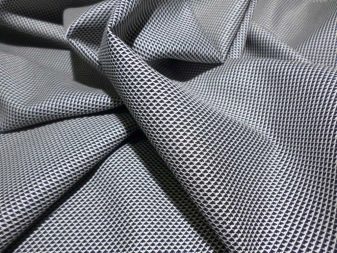

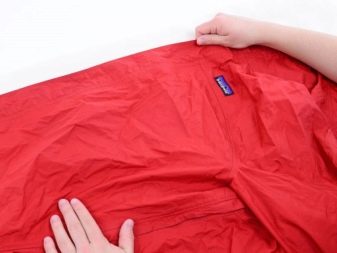

Types and their properties
There are many types of polyester, but not always you can see the inscription "100% polyester" on clothing tags. Experts have long noticed that if, in the production of this material, some other component is added to the polyester raw material, then its properties can be changed and improved.

For example, when cotton is added to the fabric, its hygroscopicity can be increased. Such material does not fade, dries quickly after washing, so it is simply ideal for bed linen.
But with the addition of elastane or spandex, the polyester fabric will become more elastic. It is used to make tight-fitting things that stretch well: stockings, socks, underwear. True, these things are not recommended to dry in the open air due to their rapid burnout in the sun.
Polyamide is often added to polyester fabric. Thus, the material becomes like a silk cloth. It does not fade in the sun and perfectly retains the shape that is given to it, and also such fabric almost does not get wet.

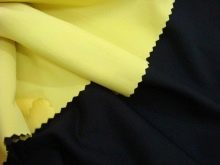

Polyester also increases the strength characteristics of a material such as viscose. Moreover, it becomes more resistant to shedding. There are two varieties - woven fabric and non-woven fabric. The definition of one or another variety depends on the method of production of the material, for the manufacture of which either weaving machines are used, or the fibers of the material are combined in various other ways.

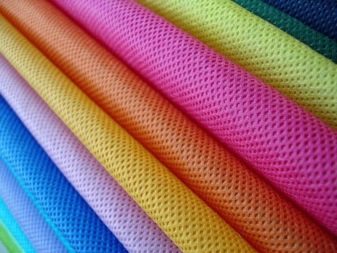
Comparison with other materials
As soon as polyester entered production, and then on store shelves, consumers involuntarily began to compare it with other types of fabrics, primarily cotton, although this is not entirely correct, because these fabrics are created from different types of raw materials: polyester is a synthetic material, and cotton is natural fabric.
Nevertheless, they are often compared in order to determine which is better - natural fabric or synthetics. Some will say that comparisons are superfluous, because cotton certainly wins in this dispute. It is soft, breathable and excellent at absorbing moisture.

Yes, in the summer, cotton really has no rivals. But in winter, polyester takes a leading position, since winter clothing is made precisely from polyester fabric. In this case, polyester acts both as a fabric and as a heater. There is simply no equal to him in cold weather. It is more expedient to compare polyester with acrylic. Acrylic is the same synthetics that use refined oil fibers, only thicker and more wavy. Acrylic is often used to make warm sweaters, hosiery, and blankets.

The difference between acrylic and polyester is that pills are often and very quickly formed on acrylic, which spoil the entire appearance of the thing, and therefore clothes made of it become unusable in a fairly short time.
The advantages of acrylic are its softness, it is not subject to shrinkage, does not wrinkle at all, while maintaining a neat appearance. They wash acrylic clothes in the same way as polyester - at a water temperature not exceeding 40 degrees. Acrylic dries after washing too quickly.
In production, acrylic is often mixed with wool to create an excellent material that has all the virtues of wool and acrylic. It is warm, fluffy, breathable. This is another similarity between acrylic and polyester - it goes well with natural fibers, which undoubtedly improves the quality of both materials.
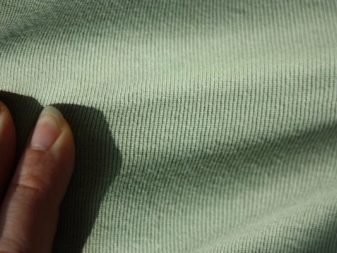

Many people often compare synthetic winterizer and polyester, not knowing that synthetic winterizer - this is polyester, that is, a type of polyester filler. The modern synthetic winterizer has evolved markedly since the time when polyester fabric and synthetic fillers only began to appear on the market.
At that time, they were not of the best quality due to the use of glue for gluing it. Nowadays, there are no third-party gluing components in the synthetic winterizer, it has become much thicker and more voluminous. In addition, modern synthetic winterizer does not roll into lumps inside clothes, such as down, and also retains its appearance even after many washes.


Viscose is the precursor to polyester. It appeared earlier, so consumers and professionals know more about it, but as soon as polyester appeared on the market, it immediately began to compete with it and oust it from store shelves. This happened due to the strength of the polyester fabric, than viscose, alas, can hardly boast.
And also from the advantages of polyester in comparison with viscose can be called a more tolerant ratio of polyester to bleaching and boiling. It is forbidden to carry out such manipulations with viscose, otherwise you can completely ruin the fabric.

But viscose also has many advantages. Due to the fact that viscose is a product obtained chemically from natural raw materials (cellulose), it has all the positive qualities of natural fabric - it does not roll, iron well, absorbs moisture, does not cause allergic reactions. And this fabric also has a beautiful shine that resembles silk overflows. Polyester fabrics have a more metallic sheen and a denser fabric texture.

The advantage of such a material as microfiber over polyester is that this synthetic material has the ability to "breathe", and therefore both bedding and sportswear are sewn from it. Microfiber, unlike polyester, absorbs moisture well, but it also has its drawbacks. It can be ruined by stroking it only once. In addition, she does not tolerate bleaching agents.


Like polyester, microfiber is highly flexible, non-stretchable and resistant to discoloration.
Areas of use
One of the advantages of polyester is its versatility. In this regard, it is used both as a fabric and as a heater in winter clothing. In this form, it is used not only in winter outfit for adults, but also in overalls for small children, and it performs its function no worse than padding polyester and down. The cost of warm clothes on a polyester lining is several times less than, for example, the same down jacket with a down-feather insulation. And this is another advantage of the polyester material.

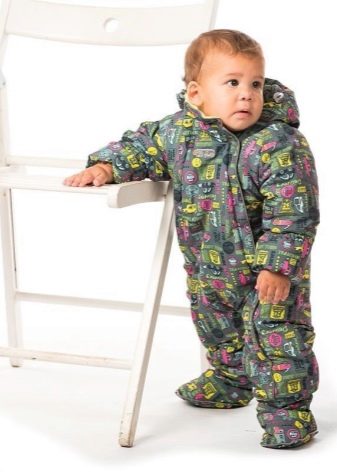
In winter clothing, polyester is used not only as insulation. For the most part, all winter clothing is made of polyester fabric. All thanks to its crease resistance, ability to maintain its shape and low hygroscopicity, which is very important in rainy or snowy weather. Such clothes will not let you down in winter and on a warm snowy day and in severe frost.
Polyester fabric has found its way into clothing for athletes. Of course, in the manufacture of such clothes, not pure polyester is used, since it is completely non-hygroscopic. But in a composition with cotton fibers, it acquires the property of absorbing moisture. Elastane is often added to such fabric, thanks to which the material stretches well and does not hinder movement, which is very important for people involved in active sports.


Polyester fabric is also used to make bags, backpacks, hiking clothes, tents and other camping equipment. Polyester is applicable in the production of curtains and tulle, as well as other home textiles.

Subtleties of care
The most important point in caring for polyester fabrics is the correct wash cycle. Fortunately, now in washing machines you do not need to think about what temperature to set and at what number of revolutions to wring out the fabric, since the machine itself, in accordance with the specified program, selects the desired temperature and other washing characteristics. The hostess only needs to turn the pointer to the desired type of fabric, for example, "Synthetics".

If polyester is washed by hand, then you need to remember that this fabric cannot be washed in water above 40 degrees. And of course, you should always look at the fabric tags on the product. They may have prohibition signs regarding machine washing and dry cleaning.
In addition to these data, on the tags you can also see instructions for ironing synthetic clothes. And if there are no indications of the types of fabric on the iron, then the comments on the tag will be very helpful. The number of dots on the iron sign usually indicates at what temperature it is allowed to iron this and that thing. In general, polyester fabric is completely undemanding: it almost does not wrinkle, does not fade, and simple stains can often be removed almost immediately after they appear with an ordinary damp cloth.

Reviews
Earlier, when they saw an indication of the presence of polyester on a clothing tag, many treated it with suspicion, as they believed that natural fabric is much better, more beautiful and more useful.
Polyester was not trusted for a very short time, as it quickly conquered its audience, and the quality of this fabric only got better over the years. And now it is increasing. Some of its variants, with the addition of various components, even surpass the properties of the same wool or cotton.
Most often, buyers leave positive reviews about winter clothing that is made of polyester. Many people note its excellent qualities, especially a low degree of water absorption and crease resistance. Often, young mothers note that polyester baby overalls are no worse than their downy counterparts, and they believe that the biggest advantage of polyester items is that after washing these items retain their original appearance. Consumers love that after drying clothes, there is no need to waste time smoothing out the matted material inside the overalls.


For information on how polyester is made, see the next video.








